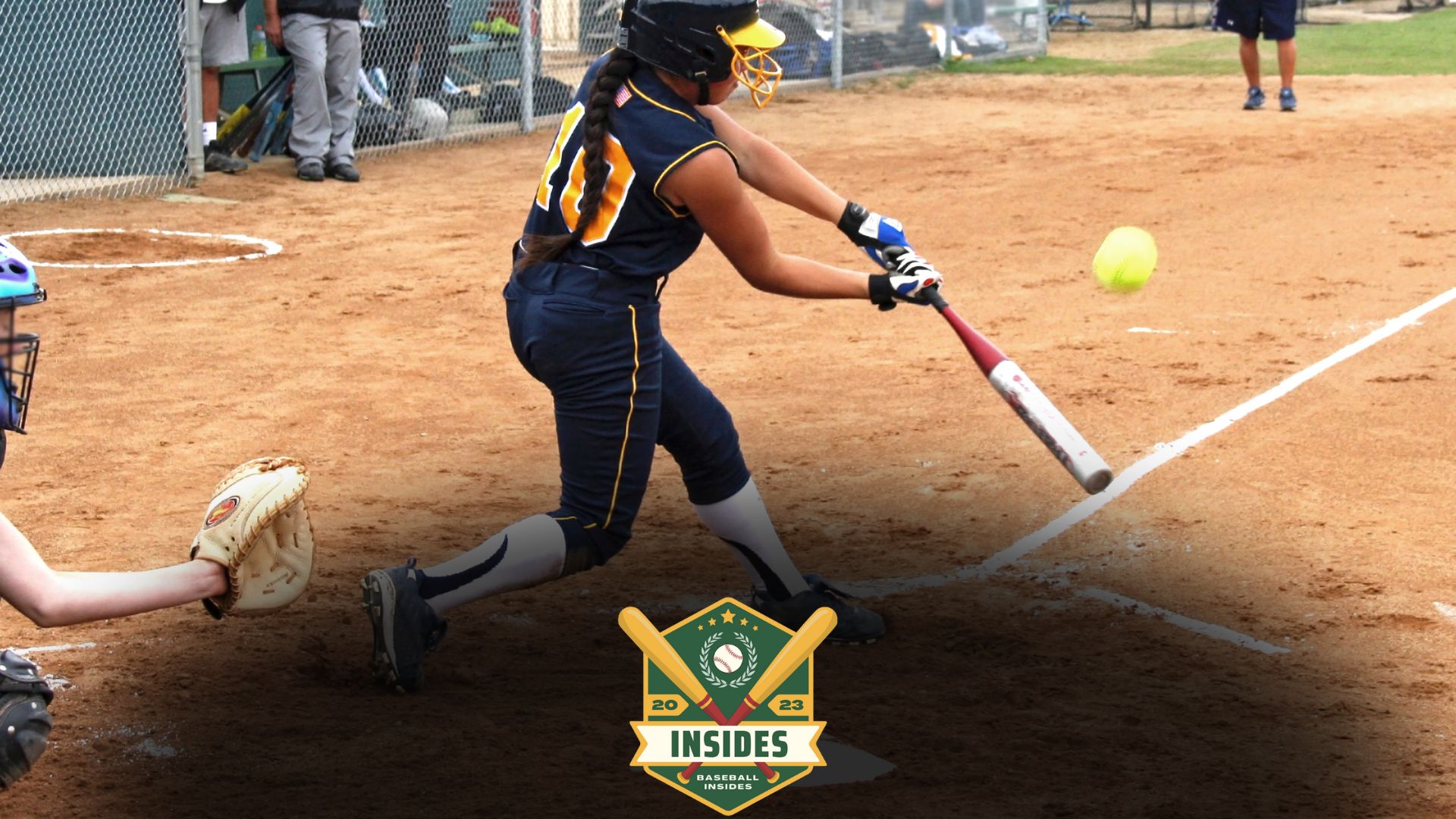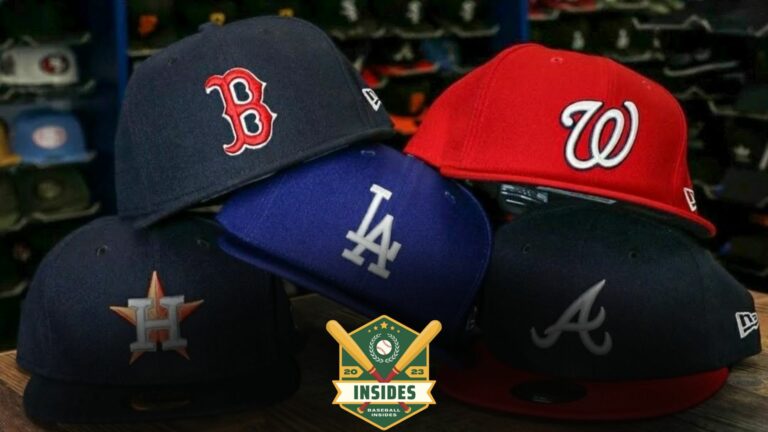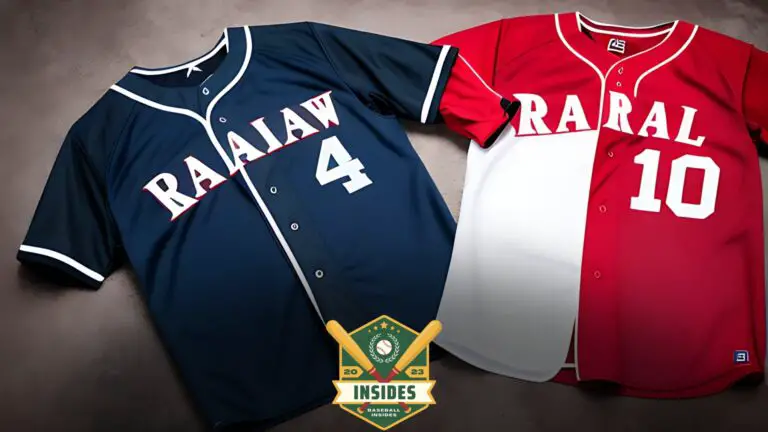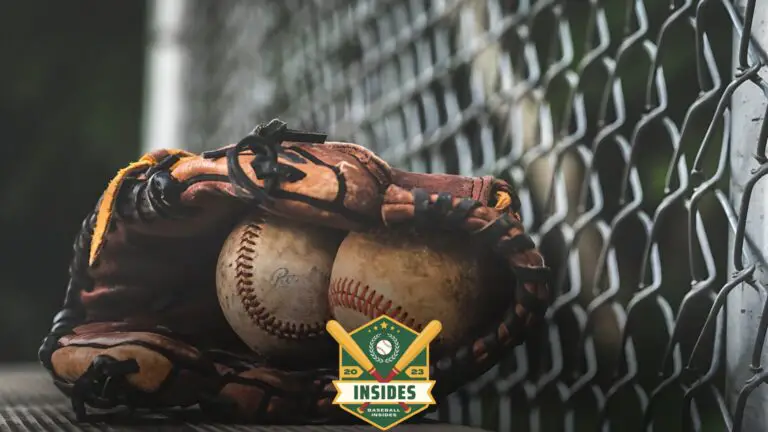
In this article:
Do you yearn for that exhilarating feeling of a perfectly timed swing, connecting bat and ball, propelling it high and far into the field?
Or maybe you’re a seasoned baseball player, but you’ve been invited to a friendly game of softball, and you’re contemplating whether to bring your trusty baseball bat.
Well, let’s cut to the chase. Can you use a baseball bat for a softball game?
The short answer is yes, technically you can. But whether you’d want to or should is a whole different ballgame.
Hold on tight as we’re about to swing into the ins and outs of baseball and softball bats and why this might not be the best idea. Trust me, it’s more than just about the pitch!
What Makes Softball Bats Different from Baseball Bats?
Understanding the differences between baseball and softball bats is key to answering the question, “Can you use a baseball bat for softball?”
Let’s delve into the specifics that set these bats apart.
Material
Both baseball and softball bats can be made from various materials like wood, aluminum, or composite materials. However, softball bats often lean more towards composite materials due to their ability to give a greater ‘pop’ effect on the ball.
In contrast, baseball bats, especially in professional leagues, are typically made out of wood.
Length and Weight
Another significant difference lies in the length and weight of the bats. Baseball bats are generally longer and heavier than their softball counterparts.
Baseball bats range from 24 to 34 inches long, while softball bats are typically between 24 and 31 inches.
This difference is primarily due to the speed and style of pitching in each sport.
Diameter
The diameter or ‘barrel’ of the bat also varies between the two sports. A baseball bat has a smaller diameter, usually 2 5/8 inches, while a softball bat features a larger barrel, often 2 ¾ inches.
The larger diameter of softball bats helps players make better contact with the larger softball.
Drop
The ‘drop’ of a bat, which is the difference between the length of the bat (in inches) and its weight (in ounces), is another distinguishing factor.
Baseball bats typically have a drop range from -3 to -13, while softball bats have a wider range, from -8 to -15.
This means softball bats can be lighter relative to their length, making them easier to swing.
While baseball and softball bats may appear similar, their differences are significant. These differences are tailored to the unique requirements of each sport, with the material, length, weight, diameter, and drop of the bats all playing key roles in optimizing player performance.
One aspect of this preparation involves the care of their personal equipment, such as learning “How to Break in a Baseball Glove in the Oven.” This method can be a quick way to soften a new glove, making it more responsive during play.
It’s fascinating how a piece of equipment can be transformed with a bit of heat, patience, and the right technique, ensuring it’s game-ready in no time.
Can You Use a Baseball Bat for Softball? The Short Answer
So, you’ve found yourself asking, “Can you use a baseball bat for softball?” Well, the short answer is yes, but it’s not quite that simple.
There are important factors to consider that can greatly affect the outcome of your game while using a baseball bat for softball.
First and foremost, the key difference between baseball and softball bats is the size. Baseball bats tend to be longer and heavier with a smaller diameter, while softball bats are shorter, lighter and have a larger diameter.
This difference in size and weight can significantly impact the bat’s performance in a softball game.
Another crucial factor to consider is the speed of the ball. In softball, the ball is pitched slower and from a shorter distance compared to baseball. This change in speed and distance can make a difference when using a baseball bat. You may find that your timing and swing are off.
Moreover, the rules and regulations of the league or tournament you’re playing in should also be considered. Some leagues may not allow baseball bats in softball games, so it’s always a good idea to check the rules before deciding to use a baseball bat for softball.
Note: While it’s technically possible to use a baseball bat for softball, it may not be the best choice, depending on the specific circumstances. Always consider the factors mentioned above before making your decision.
So, can you use a baseball bat for softball? Yes, but with a few caveats. Always remember, the key to a successful game isn’t just about the equipment but how you use it.
How Using a Baseball Bat Affects Your Softball Game
When you bring a baseball bat to a softball game, you step onto the field with a tool designed for a slightly different purpose. But how does this difference in design influence your performance in a softball match?
Let’s delve into the particulars.
Material and Structure
Baseball bats are typically made of wood, metal, or composite materials and are designed to hit harder, smaller balls. The density and slim profile of a baseball bat can affect the way it interacts with the larger, softer softball.
You might find that the bat doesn’t have the ‘give’ you’re used to when hitting a softball, leading to less satisfying contact and potentially less power in your swing.
Weight and Length
Baseball bats are usually longer and heavier than softball bats. This can throw off your timing and make it more difficult to make contact with the ball. The extra weight may also slow down your swing, reducing your chance of hitting the ball with maximum power.
Barrel Size
The barrel of a baseball bat is smaller than that of a softball bat. This means you have a smaller sweet spot to hit the ball, making it more challenging to achieve the kind of solid contact that sends the ball flying.
Safety Considerations
Lastly, perhaps most importantly, using a baseball bat in a softball game can raise safety issues. Baseball bats are designed to hit baseballs, which are smaller and harder than softballs.
If you use a baseball bat to hit a softball, the bat might not withstand the impact and could potentially break, posing a risk to you and other players on the field.
Another intriguing habit among players is “Why Baseball Players Chew Gum.” This practice, seen in dugouts and on fields everywhere, is more than just a quirk. Chewing gum can help players maintain focus and manage stress during intense moments, showing how psychological readiness is as crucial as physical readiness in sports.
Pros and Cons of Using a Baseball Bat in Softball
When it comes to using a baseball bat in softball, there are advantages and disadvantages to consider. While both sports share similarities, the equipment used in each game has been designed specifically for the unique demands of that sport. Let’s delve into the pros and cons to give you a clear picture.
The Pros
- Power: Baseball bats are typically heavier than softball bats. The additional weight can lead to more powerful hits, potentially sending the ball further.
- Variety: If you are in a pinch, you might find it easier to find a baseball bat. Baseball is a more popular sport, leading to a wider variety of bats being available.
- Durability: Baseball bats are generally made to withstand hard baseballs, so they could last longer when used in softball, depending on the bat’s material and construction.
The Cons
- Weight: The increased weight of a baseball bat can also be a disadvantage. It might make the bat more difficult to swing quickly and could slow down your reaction time.
- Size: Baseball bats are often longer and have a smaller barrel size than softball bats. This can make it more challenging to hit a softball accurately.
- Rules: In some leagues and tournaments, using a baseball bat in softball might be against the rules. Always check with the governing body before using a baseball bat in a softball game.
Note: While it’s possible to use a baseball bat for softball, it’s important to remember that each bat is designed for the specifics of its respective sport. Using a baseball bat in softball could impact your performance and might not be allowed by the game’s rules.
| Longer with a smaller barrel | Softball Bat | |
|---|---|---|
| Weight | Heavier | Lighter |
| Size | Shorter with a larger barrel | Shorter with larger barrel |
| Durability | Potentially more durable | Designed specifically for softball balls |
Tips for Choosing the Right Bat for Your Softball Game
When preparing for a softball game, one of the most essential tools in your arsenal is your bat. But did you know choosing the right bat can significantly improve your performance on the field?
Let’s dive into some key considerations to keep in mind.
The Type of Game
First off, you need to consider the type of softball game you’re playing. Fastpitch and slowpitch games have different requirements for bats, so it’s crucial to choose a bat that is specifically designed for your game type.
Material of the Bat
Bats are typically made of several materials: alloy, composite, and hybrid (a combination of alloy and composite). Each material has its pros and cons, so it’s important to choose one that fits your playing style.
For instance, alloy bats are durable and provide a stiffer feel, while composite bats offer a larger sweet spot and less vibration on contact.
Length and Weight
The length and weight of your bat are also critical factors to consider. A rule of thumb is the longer the bat, the greater the reach you will have at the plate.
However, a longer bat is also typically heavier, which could affect your swing speed. Be sure to balance length and weight that suits your strength and swinging style.
Drop Weight
Drop weight is the difference between the length (in inches) and weight (in ounces) of the bat. A lower drop weight means a heavier bat, which can provide more power but might be harder to swing.
On the other hand, a higher drop weight indicates a lighter bat, which is easier to swing but may provide less power.
Comfort and Feel
Lastly, the bat should feel comfortable in your hands. It should have the right grip, balance, and vibration control. Comfort can significantly affect your performance, so don’t overlook it in your decision process.
How to Take Care of Your Softball Bat
Taking care of your softball bat is integral to maintaining its performance and longevity. Bats, whether they’re made for baseball or softball, require specific care and attention. Here’s how you can keep your softball bat in top shape.
Storage
Always store your bat in a cool, dry place. Extreme temperatures, especially heat, can warp the bat and reduce its effectiveness. Never leave it in your car, or anywhere it might be exposed to direct sunlight for extended periods.
Cleaning
Softball bats need regular cleaning to keep them in good condition. Use a soft, damp cloth to wipe down the bat after each use. Avoid using abrasive materials or harsh chemicals that could damage the surface.
Inspection
Regularly inspect your bat for any signs of damage. Look for cracks, dents, or looseness in the grip. If you spot any issues, it’s best to replace the bat as soon as possible to avoid injuries or poor performance during a game.
- Never use a damaged bat: If you notice any significant damage, stop using the bat immediately. Continuing to play with a damaged bat can lead to further damage and even possible injury.
- Rotate your bat: Regularly rotate your bat slightly each time you hit. This can help to extend its lifespan by ensuring that one side doesn’t take all the impact.
- Avoid using in cold weather: Extremely cold temperatures can affect the performance of your bat and may even cause it to crack. Try to avoid using your bat in temperatures below 60 degrees Fahrenheit.
Remember, a well-maintained bat not only lasts longer but also guarantees optimal performance during every game.
By following these care guidelines, you can ensure your softball bat remains in optimal condition, delivering excellent performance every time you step up to the plate. So, treat your bat with the care it deserves, and it will surely serve you well.
Furthermore, the maintenance of a player’s gear, specifically “How to Regrip a Baseball Bat,” is another essential skill. A well-gripped bat can significantly impact a player’s swing and control, demonstrating the importance of equipment upkeep.
This process, while simple, can make a considerable difference in a player’s performance, highlighting the meticulous attention athletes pay to every detail of their gear.
Conclusion
The interchangeability of baseball bats for softball games is not as straightforward as it may initially seem. While you technically can use a baseball bat in a softball game, it’s not the most effective or recommended choice.
Various factors such as size, weight, material, and design play a significant role in the performance of these bats, especially when switching between different types of games.
Notable Differences:
- Size and Weight: Baseball bats are generally longer and heavier, making them more challenging to handle in a softball game.
- Material: The materials used in baseball bats may not perform as efficiently when hitting a larger, softer ball.
- Design: The taper and barrel diameter of baseball and softball bats are specifically designed for the respective balls they are meant to hit.
Therefore, while it’s not against the rules, using a baseball bat in a softball game may not yield the best results. It’s always recommended to use the appropriate equipment for each sport to ensure optimal performance and safety.
Frequently Asked Questions
Can I use a baseball bat for a softball game?
Technically, you can use a baseball bat in a softball game. However, it’s important to note that baseball and softball bats are designed differently to suit their respective sports. Baseball bats are generally longer and narrower, while softball bats are shorter and have a larger barrel. Using a baseball bat in a softball game might affect your performance due to these differences.
Are the materials of baseball bats and softball bats different?
Baseball and softball bats can both be made of similar materials, such as wood, aluminum, composite, or a hybrid of these materials. However, the composition and construction of these materials may vary between the two types of bats, leading to different performance and durability characteristics.
Are there any regulations about using baseball bats in softball?
Yes, there are regulations. Softball leagues and associations often have specific rules about the types of bats that can be used in games. These rules often specify the bat’s weight, length, material, and performance characteristics. Therefore, before using a baseball bat in a softball game, you should check the rules of your league or association.
Will using a baseball bat in softball affect my performance?
Potentially, yes. Baseball bats are designed for hitting baseballs, which are smaller and harder than softballs. The differences in the design and construction of baseball and softball bats can affect how well you hit the ball in a softball game. Therefore, using a baseball bat in a softball game could lead to a decrease in performance.
What should I consider if I want to use a baseball bat for softball?
If you’re considering using a baseball bat for softball, there are a few factors you should take into account:
- Performance: As mentioned before, the design and construction of baseball bats can affect your performance in a softball game.
- Regulations: Ensure you check the rules of your league or association to avoid penalties or disqualification.
- Comfort: The feel and grip of a baseball bat may be different from a softball bat, which could affect your comfort and swing.






